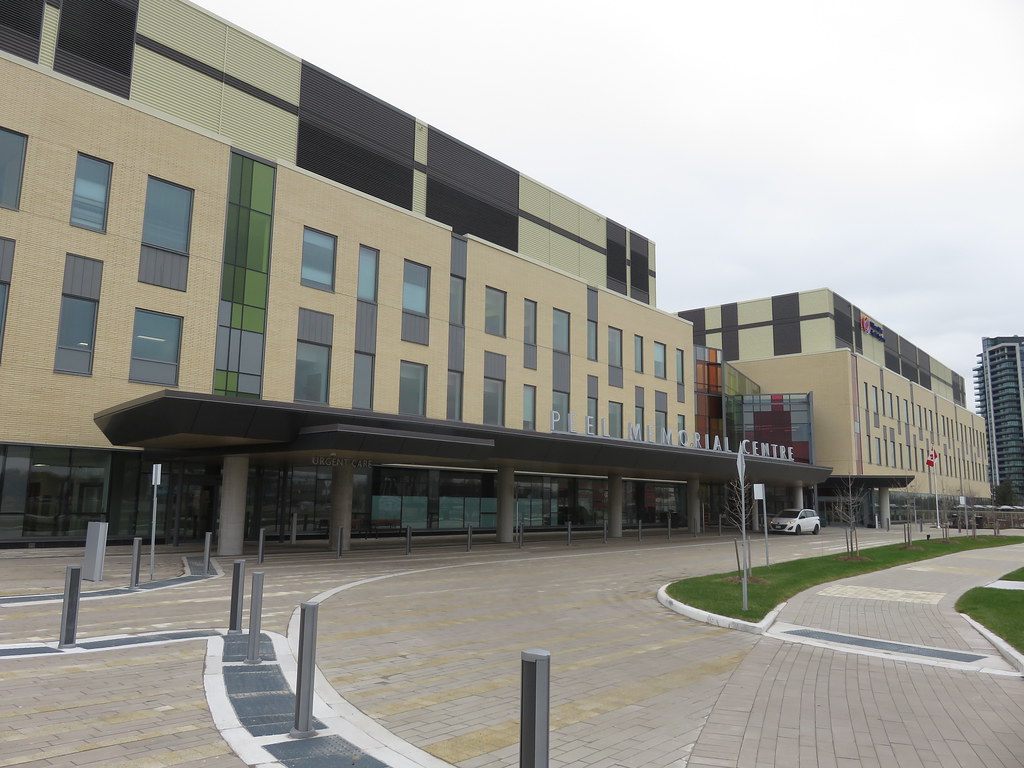Natalie Mehra is the executive director of the Ontario Health Coalition, a non-profit network of grassroots community organizations. While she advocates for better health care across the province, Brampton is of particular interest to her.
“For decades now, the continuum of care from hospital care to long-term care to primary care … is woefully inadequate to meet the population’s needs,” Mehra told NCM.
The city’s growing population is placing enormous pressures on the hospital system. There are two hospitals, of which only one is full-service, serving the needs of over 600,000 people; that means less than one hospital bed per 1,000 people. Chronic overcrowding is hurting the system that is bursting at the seams. “Hallway medicine,” a colloquialism describing patients receiving health care in non-treatment spaces like hallways or closets, is a daily reality in the city.
Brampton also has one of the highest rates of type 2 diabetes in Ontario and among the highest in the country. Its population is nearly three quarters South Asian: people from the Indian Subcontinent and surrounding areas. This ethnic group is six times more likely to contract type 2 diabetes than Caucasians.
“The most atrocious negligence”
Brampton’s health-care needs are a great source of stress for the public. This is what pushed Mayor Patrick Brown and his council colleagues to create #FairDealForBrampton, a campaign to lobby the Government of Ontario to build a third health-care facility and to upgrade one of the existing hospitals to a full-service one. The petition has garnered 18,500 signatures as of March 2020, according to the City of Brampton.
“This may be the most atrocious negligence in the province,” Brown said in 2019 about what many feel is the provincial government ignoring the city’s needs. Brampton Civic Hospital, the city’s only full-service hospital, was built in 2007 and it was overloaded with patients almost immediately. Its emergency department was designed to serve 90,000 patients per year, but in reality it is averaging 130,000 patients annually. Repeated calls for more beds have gone ignored.
Peel Memorial Centre is the only other large health-care facility and it has been waiting for phase 2 of its development, which would turn it into a full-service hospital, for years. Peel Memorial was designed for 10,000 patients per year, but it is serving 75,000. The COVID-19 pandemic has further stretched resources in the city and has led to renewed calls for improvements. At one point, the city accounted for 20 per cent of all COVID-19 cases in Ontario.
“The infrastructure just has not kept up for many years,” Mehra lamented.
She praised the city council for lighting a fire under the Ontario government and raising awareness about the city’s lack of infrastructure. “I think the municipal council has been amazing. Far better than any other places in the province,” she said. “I think the call that they made for the redevelopment of the Peel Memorial Centre and the very significant increase for hospital beds is absolutely right.”
Brampton’s (un)healthy immigrant effect
Health experts say that immigrants are actually healthier than the Canadian-born population when they first arrive in the country. It is an area of great interest for health-care and government workers. The phenomenon even has a name: it is called the healthy immigrant effect.
But once immigrants have settled, their health starts to deteriorate. The unique health needs of immigrants, who make up more than half of the population of Brampton, make health-care policy a part of immigration policy.
“The healthy immigrant effect is something that we have observed in health data around people who are newcomers to Canada,” Dr. Jessica Hopkins told New Canadian Media. Dr. Hopkins used to be the medical officer of health for the Region of Peel. She is now the chief health protection and emergency preparedness officer for Public Health Ontario.
One of the factors behind the effect is also a sort of positive self-selection. Those who choose to immigrate to Canada tend to be from a higher socio-economic background. They have access to better healthcare, foods and recreational amenities. But, “immigrants will often adopt the behaviours they find in their new country,” Hopkins said. This can include adopting diets heavy in fast food, or adopting routines like driving to run simple errands.
“If you look at Canada, we are largely a car-centric culture,” she added. “So there might not be as much physical activity.”
Health care vs. urban planning
Canada’s emphasis on a suburban way of life has made cities less walkable. Longer city blocks are the norm. This, combined with segregated zoning, where one part of the city is cordoned off for housing, another for commercial use, and another for industrial, only adds to the distance and makes citizens dependent on cars.
Jane Jacobs, the author of The Death and Life of Great American Cities, says that in order to accommodate cars, “city streets are broken up into loose sprawls, incoherent and vacuous for anyone afoot.”
Brampton is no exception. The very way the city is laid out contributes to the health problems of its immigrant population, who have their own unique challenges.
“So, if you are in a very car-centric culture, you’re probably not walking to do things like pick up your groceries or take your children to school,” Hopkins said. “For many people, in their home countries that may have been very common—actually spending the majority of their time walking or taking public transit.”
As shown in a previous part of this series, Brampton is a city with one of the least pedestrian friendly layouts. It is an urban jungle of low-slung, low-density housing coupled with long and wide streets, so it is not walkable as a result. You won’t see Bramptonians run their errands on foot.
Walk Score, a house hunting website that assigns walkability scores to cities, gives Brampton 44 points out of 100. The neighbouring Mississauga is only slightly better with 49, Toronto sits at 62 and Montreal is at 65. London, Paris and Barcelona are described by the site as walkers’ paradises, with a score of 100 each.
All of these factors—lack of health-care infrastructure, genetic predispositions towards illnesses and unhealthy lifestyles—make Brampton one of the least healthy cities in Ontario, and immigrants feel the effects.
Brampton 2040: healthy citizens
Brampton is attempting to address the issue of health through urban design in its Living the Mosaic: Brampton 2040 Vision. The document lists seven “visions” its framers hope to implement. Vision number six aims to make Brampton “a mosaic of healthy citizens enjoying physical and mental wellness, fitness, and sports.” Authors recognize that “health has to be about advocacy but also addressing urban structural deficiencies that are not health promoting.”
“Community design and environmental improvements are key, such as scaling and parameters for walkability, applying health considerations to building design, and noise mitigation,” Brampton 2040 Vision reads. “The overall aspiration is to make everyone mutually accountable for Brampton’s health outcomes, including civic departments, other governments, healthcare services, the education sector, as well as families and individuals. Accountability, for both physical and mental health, occurs along the entire health continuum.”
The 2040 Vision also lists “Diabetes and Heart Disease Prevention Challenge” as a top priority and calls it a “local crisis that is currently differentiating Brampton from other cities.”
There is no denying that Brampton’s layout and lack of sufficient hospital infrastructure make the city’s immigrant population vulnerable to illness. COVID-19 has only amplified Brampton’s hallway medicine, a problem the city has not been able to tackle for years. A #FairDealforBrampton is long overdue.
Mansoor Tanweer is New Canadian Media’s Local Journalism Initiative reporter on immigration policy. An immigrant himself, he has covered municipal affairs and the Brampton City Council in addition to issues relating to newcomers over several years.





